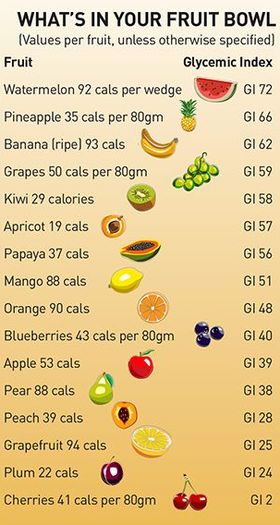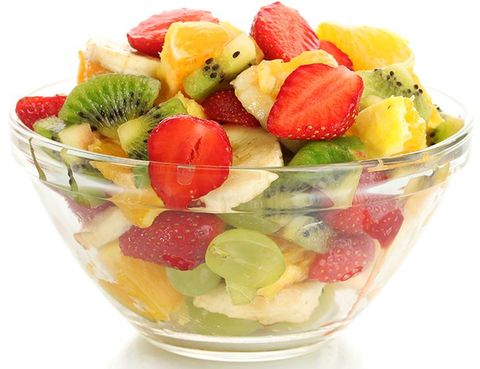It used to take a packet of cheesy Wotsits or a nuclear blue Slush Puppie for nutritional panic to strike in parents. But, as sugar has become more of a dietary pariah than fat or artificial additives, markers of what’s healthy have shifted towards the ridiculous.
Concerns about widening waistlines mean that, whatever form it comes in, sugar must go. And in the rush to avoid the sweet stuff, fruit is the biggest casualty. Recently I have seen mothers balk if their child asks for a banana.
Friends tell me of letters from primary schools encouraging them not to pack fresh fruit in lunchboxes, of how sugar phobia is rife in middle-class areas. Last month a survey conducted by Fruit Heroes, a raw fruit bar manufacturer, found that one in ten parents think all fruit—dried, fresh, tinned—is unhealthy.
It is easy to get swept along in the tide of anti-sugar sentiment. We all know we are consuming too much and, with the latest World Health Organization report recommending that we get no more than 10 per cent of our daily energy from added sugars, or those found naturally in juices and honey—equating to about 12 teaspoons a day—you find yourself mentally totting up where it all comes from.

For many, fruit, with its high levels of naturally-occurring fructose, is considered an extra we can do without. Almost without realising it, and against your better judgment, you find yourself cutting down. There has been no conscious unsugaring in my household, yet my weekly medium fruit box has, by necessity, been downsized to small. Intentionally or not, we are eating less fruit and more veg, a shift in ratio that I would vouch is happening in homes other than my own.
Sugar-shunning gurus add to the confusion with their fruit-fearing mantras. Davina McCall, author of the bestseller 5 Weeks to Sugar Free, says she avoids grapes. Harley Pasternack, the celebrity trainer who advises Katy Perry and Lady Gaga about diet and fitness, says: “I tell my clients to stick to fruits that either have edible skin, edible seeds or citrus.”
And healthy-eating Ella Woodward, the social media sensation behind the Deliciously Ella blog that has had more than 17 million hits, says she eats dates, berries, apples and citrus fruits in her daily diet, but “there are fruits such as grapes and melon which are higher GI so I tend to avoid these on a regular basis. Bananas also fall into this category so I tend not to go mad on those.”
It is, says nutrition expert Ian Marber, a diet message gone haywire. “There has been this huge misinterpretation and overreaction to the sugar warnings,” he says. “Just like fat is an umbrella term for good and bad varieties, so is sugar. Yes, fruit contains sugar, but it also contains fibre, vitamins and minerals. People are viewing fruit sugar as they would the sucrose added to cakes and biscuits. It is completely inappropriate to think of it in that way.”
It is particularly risky for children, adds Dr Sarah Schenker of the British Dietetic Association. “As adults we should not be snacking—on anything, fruit included—as much as we do,” she says. “But children are not mini adults. They have different nutritional needs, small tummies that need a regular supply of food.” Fruit is the perfect stopgap and dessert. “It provides fluid, nutrients and fibre that fills them up,” Schenker says. “Just as importantly, it is much, much less sweet than fizzy drink and confectionery, so children develop a lower taste threshold for sweet-tasting things.”
Robert Lustig, professor of clinical paediatrics at the University of California, San Francisco, and an expert on childhood obesity, is among the most outspoken anti-sugar campaigners and has called for it to be controlled like alcohol and tobacco, but even he thinks fruit is OK. “It comes with its inherent fibre, and fibre mitigates the negative effects,” he says. “The way God made it, however much sugar is in a piece of fruit, there is an equal amount of fibre to offset it.”
That is not to say that adults should keep a bowl of berries on their desk and nibble on them, paleo-style, all day. An issue for adults is the high GI of many fruits. Some, myself included, eat them only to feel more hungry shortly afterwards. “Far better to chuck some apple into a cheese and walnut salad, to combine fruit with other food,” says Schenker. “You lower its GI so it is more filling and you still get the healthy benefits.”
Many of the recipes in Lustig’s bestselling book, Fat Chance, use fruit to add sweetness. “Eat all the fruit you want,” he says, apart from grapes which are “just little bags of sugar” and—crucially—fruit that has been pulped or squeezed into juice. Most experts believe that juicing fruit is not a good thing, partly because of the sugar rush and partly because, as Lustig puts it, “it loses its fibre”.
High consumption of fruit juices and smoothies has been linked to tooth decay and expanding waistlines. Writing in The Lancet last year, researchers from Glasgow University identified a possible link between high fruit juice intake and an increased risk of diabetes, claiming that fruit juice is potentially “just as bad for you” as cola and lemonade.

Those smugly congratulating themselves for switching to trendy green juices should be warned that seemingly healthier vegetable-based smoothies can raise your sugar count in much the same way as fruit. Vegetables are not sugar-free—some contain very little (cauliflower, kale, sprouts), but others are sweet beyond expectation (beetroot, parsnips, carrots and peas).
As with fruit, the natural sugars in vegetables take on a different form when crushed or pulped. “In their whole form, the cell walls hold natural sugars inside a vegetable but as soon as they are broken down through pureeing, juicing or cooking, these ‘intrinsic’ sugars are released from that structure,” says Schenker. It is in this “extrinsic” form that sugars are most damaging to teeth and waistlines.
How, then, to tackle the fruit conundrum? Marber suggests some simple pointers. Fruit juice is out, smoothies should be limited and dried fruit, he shudders, should be given very sparingly. “Parents give their children a pack of dried apricots thinking it is better than chocolate,” he says. “It is, but only just. Fresh fruit would be infinitely better.”
Beyond that, we should stop panicking. “Adults could do a lot worse than eat a mango or a bowl of blueberries, especially with plain yoghurt, which slows down the sugar release into the bloodstream,” he says. “It has all gone crazily out of perspective. I have no problem at all with recommending that people eat fruit.”





